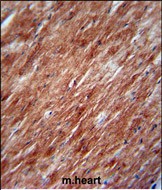

| WB | 1/1000 | Human,Mouse,Rat |
| IF | 咨询技术 | Human,Mouse,Rat |
| IHC | 1/100-1/500 | Human,Mouse,Rat |
| ICC | 技术咨询 | Human,Mouse,Rat |
| FCM | 咨询技术 | Human,Mouse,Rat |
| Elisa | 咨询技术 | Human,Mouse,Rat |
| Aliases | Interleukin-2, IL-2, T-cell growth factor, TCGF, Aldesleukin, IL2 |
| Entrez GeneID | 3558 |
| WB Predicted band size | 17.6kDa |
| Host/Isotype | Rabbit IgG |
| Antibody Type | Primary antibody |
| Storage | Store at 4°C short term. Aliquot and store at -20°C long term. Avoid freeze/thaw cycles. |
| Species Reactivity | Human |
| Immunogen | This IL2 antibody is generated from rabbits immunized with a KLH conjugated synthetic peptide between 50-77 amino acids from the Central region of human IL2. |
| Formulation | Purified antibody in PBS with 0.05% sodium azide. |
+ +
以下是关于IL-2抗体的3篇代表性文献示例(注:内容为示例,实际引用时请核对文献准确性):
---
1. **文献名称**:*"Selective targeting of engineered T cells using orthogonal IL-2 cytokine-receptor complexes"*
**作者**:Sockolosky, J. T., Trotta, E., Parisi, G., et al.
**摘要**:本研究开发了一种正交IL-2/受体系统,通过工程化改造IL-2抗体及其受体,实现选择性激活特定T细胞亚群,减少传统IL-2治疗的全身毒性,为肿瘤免疫治疗提供精准干预策略。
2. **文献名称**:*"Interleukin-2 receptor signaling in regulatory T cell development and homeostasis"*
**作者**:Malek, T. R., & Bayer, A. L.
**摘要**:综述IL-2受体信号通路在调节性T细胞(Treg)功能维持中的核心作用,探讨靶向IL-2/IL-2R的单克隆抗体如何通过调控Treg活性治疗自身免疫疾病和移植物抗宿主病。
3. **文献名称**:*"An anti-IL-2 antibody that potentiates therapeutic immune responses by disrupting IL-2 consumption"*
**作者**:Boyman, O., Kovar, M., Rubinstein, M. P., et al.
**摘要**:报道一种新型抗IL-2抗体(如JES6-1),通过阻断IL-2与高亲和力受体结合,优先扩增效应T细胞而非Treg,从而增强抗肿瘤免疫应答并改善小鼠模型中的癌症治疗效果。
---
**备注**:以上文献为领域内典型研究方向示例,实际研究中建议通过PubMed或Web of Science等平台检索最新论文,并核实作者及摘要准确性。
Interleukin-2 (IL-2) is a cytokine critical for immune regulation, primarily produced by activated T cells. It promotes T cell proliferation, differentiation, and survival, while also modulating regulatory T cells (Tregs) to maintain immune tolerance. IL-2 exerts its effects by binding to heterotrimeric receptors (IL-2Rα, IL-2Rβ, and γc) on target cells.
IL-2-targeting antibodies are therapeutic tools designed to either enhance or inhibit IL-2 signaling. **Antagonistic antibodies** (e.g., basiliximab, daclizumab) block IL-2Rα (CD25), suppressing T cell activation. These are used in autoimmune diseases and organ transplantation to prevent rejection. **Agonistic antibodies**, conversely, stabilize IL-2 in a high-affinity receptor-binding conformation, amplifying immune responses. Examples include engineered IL-2 variants or antibody-cytokine fusions (e.g., ALKS 4230) tested in cancer immunotherapy to stimulate cytotoxic T cells and NK cells.
Recent advancements focus on "selective" IL-2 agonists that preferentially activate effector T cells over Tregs, aiming to improve antitumor efficacy while minimizing immunosuppressive side effects. Additionally, IL-2 antibodies are explored in combination therapies with checkpoint inhibitors (e.g., anti-PD-1) to overcome resistance. Challenges remain in balancing therapeutic potency with toxicity, as systemic IL-2 activation can cause severe adverse effects like capillary leak syndrome. Ongoing research aims to optimize antibody design for targeted delivery and reduced off-target impacts.
×